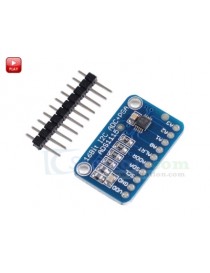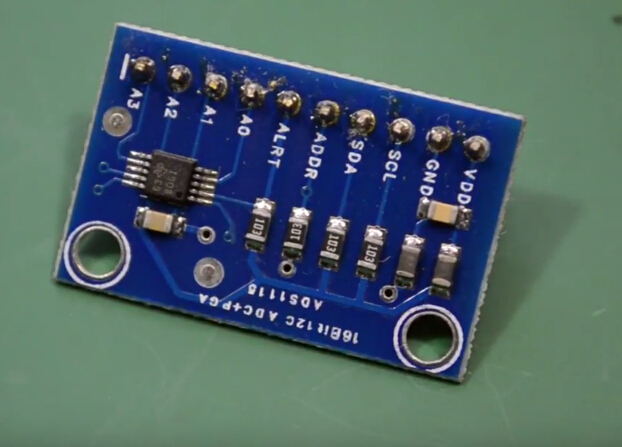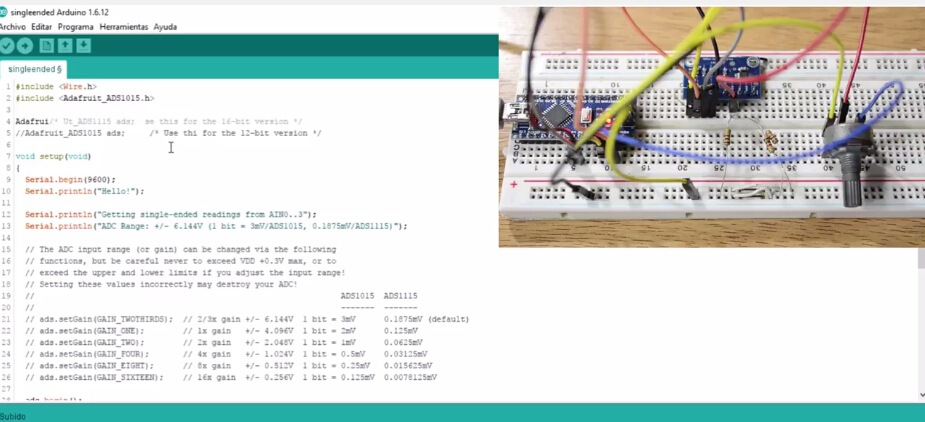Features:
1. ADC Bit rate: 16 Bit
2. Interface Type: I2C
3. Channels: 4 Channel AN0 AN1 AN2 AN3 or 2 differential inputs
4. Input voltage: 2.0-5.5v
5. Channel input voltage: 0-VDD
6. Continuous Mode: Only 150uA
7. Single-Shot Mode: Auto Shut-Down
8. PROGRAMMABLE DATA RATE: 8sps-860sps
9. Input range programmed control, 7 types input ranges:
10. -0.256V ~ + 0.256V, -0.512V ~ + 0.512V, -1.024V ~ + 1.024V,
11. -2.048V ~ + 2.048V, -4.096V ~ + 4.096 V, -6.144V ~ + 6.144V
12. I2C 7-bit addresses between 0x48-0x4B
13. Size:18mm*28mm
Description:
1. For microcontrollers without an analog-to-digital converter or when you want a higher-precision ADC,
the ADS1115 provides 16-bit precision at 860 samples/second over I2C. The chip can be configured as
4 single-ended input channels, or two differential channels. As a nice bonus, it even includes a programmable
gain amplifier, up to x16, to help boost up smaller single/differential signals to the full range.
We like this ADC because it can run from 2V to 5V power/logic, can measure a large range of signals and
its super easy to use. It is a great general purpose 16 bit converter.
2. The chip's fairly small so it comes on a breakout board with ferrites to keep the AVDD and AGND quiet.
Interfacing is done via I2C. The address can be changed to one of four options (see the datasheet table 5)
so you can have up to 4 ADS1115's connected on a single 2-wire I2C bus for 16 single ended inputs.
3. To get you started, we have example code for both the Raspberry Pi (in our Adafruit Pi Python library)
and Arduino (in our ADS1X15 Arduino library repository) Simply connect GND to ground, VDD to your logic power supply,
and SCL/SDA to your microcontroller's I2C port and run the example code to start reading data.
Tested by ICStation Outstanding Partner ElectroTodos:



 Politiche per la sicurezza (modificale con il modulo "Rassicurazioni cliente")
Politiche per la sicurezza (modificale con il modulo "Rassicurazioni cliente")
 Politiche per le spedizioni (modificale con il modulo Rassicurazioni cliente)
Politiche per le spedizioni (modificale con il modulo Rassicurazioni cliente)
 Politiche per i resi merce (modificale con il modulo Rassicurazioni cliente)
Politiche per i resi merce (modificale con il modulo Rassicurazioni cliente)





